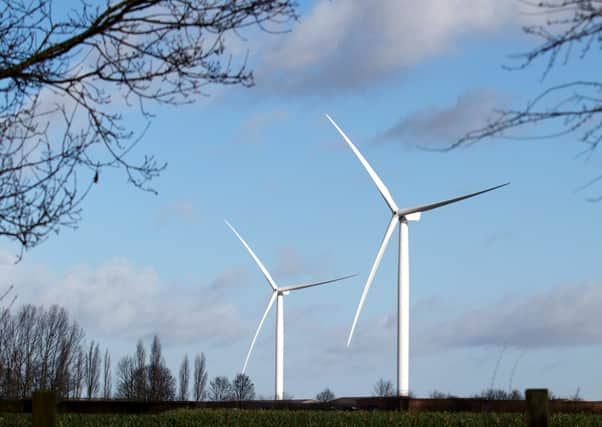Councillors considering backing more wind and solar power farms across district


Authorities are reviewing the Central Lincolnshire Local Plan for the coming years to factor in necessary responses to climate change through greener forms of energy.
the recommendations from consultants and officers before them are in stark contrast to county council policy which opposes the further ‘industrialisation’ of the rural landscape through new onshore wind farms, in favour of offshore sites such as Triton Knoll.
Advertisement
Hide AdAdvertisement
Hide AdThe Central Lincolnshire plan maps out the vision for future development of housing, business and infrastructure across North Kesteven, West Lindsey and the City of Lincoln.
The Central Lincolnshire Joint Strategic Planning Committee meets today (Monday) to consider options to help the councils and their districts to become carbon net zero for emissions.
Councillors are being urged to set in motion policies that broadly map out potential areas where they would look favourably if proposed for commercial scale solar and wind farms. Any proposals outside these criteria would be resisted.
The three local authorities will have to take the recommendations back to their members and a final decision is expected to be taken by committee in June, leading to public consultation this summer.
Advertisement
Hide AdAdvertisement
Hide AdNKDC has already declared a Climate Emergency and in September the council approved the Climate Emergency Strategy and Action Plan to set out the action the authority will take to achieve net zero emissions by 2030 and to support partners, residents and local businesses to achieve carbon neutrality by the same date.
Coun Richard Wright Leader of NKDC said: “As a council that has taken a clear position in pursuit of climate change responses and set out an ambitious action plan to progress our Climate Change Strategy, we are committed to pursuing a roadmap to net-zero emissions for both the district council and the district of North Kesteven.
In the committee report consultants recommend a blend of wind and solar based energy generation in Central Lincolnshire, combined with offshore wind turbines. They predicted 70 per cent of energy needed by the three districts should be generated within this area, the rest coming from offshore. A lower scale option would be for 30 per cent energy to be generated within Central Lincolnshire.
This reduced option would equate to 75 2MW turbines, taking up 200-300 acres of land (approximately 150 football pitches). Much of the land can still be used for other farming uses, says the report. Each turbine would measure up to 150m to blade tip. If larger 3MW capacity turbines were used the number of turbines would drop to 50.
Advertisement
Hide AdAdvertisement
Hide AdIt would include pre-existing planned wind farms such as the 20 turbines that were approved after an enquiry for Heckington Fen, a scheme still opposed by some residents in the Heckington area and held up due to MoD low fly zone issues.
The consultants say that “public attitudes to onshore wind is changing, with, nationally, 73 per cent of people now supporting, in principle, onshore wind, and only seven per cent against which in turn is likely to lead to a softening of at least some views on potential harm on the landscape of such onshore turbines”.
A number of factors would rule out sites including any within 2km of all named settlements, if in designated areas of outstanding natural beauty or great landscape value, all nature conservation areas, Conservation Areas, Historic Parks and Gardens and Scheduled Monuments.
Another key factor for this area would be air safety and requirement of the Ministry of Defence. They have been trying to get clear information for exclusion zones around the many airfields in the district, including Cranwell, Waddington, as well as Digby. The MoD has previously objected to onshore windfarms unless radar mitigation systems can be devised that would overcome the disruption that wind turbine blades cause, especially as the area is often used as a low fly zone.
Advertisement
Hide AdAdvertisement
Hide AdIf they cannot get such information on exclusion zones before the summer consultation that any wind farm applicant will have to demonstrate that there would be no major negative impact on the operation of airfields or wider MoD infrastructure. They said this is not ideal as the MoD would effectively have a ‘veto’ over any plans.
They admit that by applying this ‘sieving’ technique, only a limited number of broad areas could be identified for wind farm schemes, but it would still be enough to accommodate the minimum amount of land needed which could be identified by the summer.
Officers felt there would be less problems agreeing land for solar power production.
They recommended solar power farms would take up approximately 1,000 acres of land.
Advertisement
Hide AdAdvertisement
Hide Ad